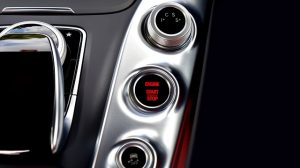When working in the industrial and commercial sector, it is necessary to adopt the right logistics techniques in order to optimize the transport and distribution of goods to customers. Cross-docking is one of the strategies to reduce the delivery time of goods. This practice is valid for all types of finished and unfinished products. Read more about it in this article.
What is cross-docking?

Cross-docking is a logistical method of reducing the storage time of goods in a warehouse. The main aim is to get the goods to their final destination as quickly as possible. This is done by grouping them with other goods with a similar destination.
Cross-docking is frequently used for express shipments and perishable goods. The goods are already packed and ready for delivery. In theory, the goods are transferred directly to the loading bay for transport to the delivery address. In this way, a warehouse is just a place of transit. In practice, traders, distributors or wholesalers are still required to check and inspect or repackage the products before they are sent.
What types of cross-docking exist?
There are three types of cross-docking:
Predistributed cross-docking
This method is the most common in the industry. Here, the supplier prepares the goods upstream for immediate dispatch to the customer. Specifically, the products are packaged in advance. Once they arrive at the warehouse, they are received and dispatched by the logistics managers.
Consolidated cross-docking
More complex than the first type, consolidated cross-docking is based more on the preparation of goods in the warehouse. The goods must be packaged there according to the customer’s request. This operation is carried out in a packing area and is the responsibility of the warehouse operators. This technique is commonly used in products from several suppliers to be packed.
Hybrid cross-docking
This is the most complicated method to implement. It requires perfect synchronization of logistics flows, as three operations are intertwined. Indeed, customer orders are prepared at the same time with products already delivered and those still in stock.
What steps should be followed in cross-docking?
To really understand how cross-docking works, here are the steps that need to be taken:
Step 1: Arrival of the goods at the loading bay
When the goods carrier arrives at the logistics platform, he first scans his delivery note by the control officer. He is then shown an unloading bay. This is located at the height of 1 metre or 1.5 metres from the ground to make it easier to unload the goods without having to use a tailgate.
Step 2: Unloading and quality control of goods
Now the goods are unloaded. The managers will place each item of goods in the central area of the dock and will carry out quality control of the goods. They will also check that the documents relating to the goods comply with the standards and that the environmental procedures relating to transport are respected. For sensitive products, they may be quarantined during the verification period.
Stage 3: Loading into another truck

Once the various checks have been completed, the goods are reloaded into new transport vehicles depending on the final destination. There are two possible scenarios:
- Either the trucks are going to be dedicated to the transport of goods of several customers. This is the most common case.
- Or they are going to group together the goods of a single customer that come from several customers. This is called “allotment”.
It should be noted that cross-docking can perfectly well take place during the same shipment. Let’s take the example of goods that leave Lille to be transported to Bayonne. It may first transit through the Paris region and then be reloaded into a truck bound for a logistics platform in Bordeaux. After checks at the site, the goods are reloaded into another lorry heading for Bayonne.
Sound off in the comments section below, and tell us what you want to read next and if you want to read more about cross-docking.




